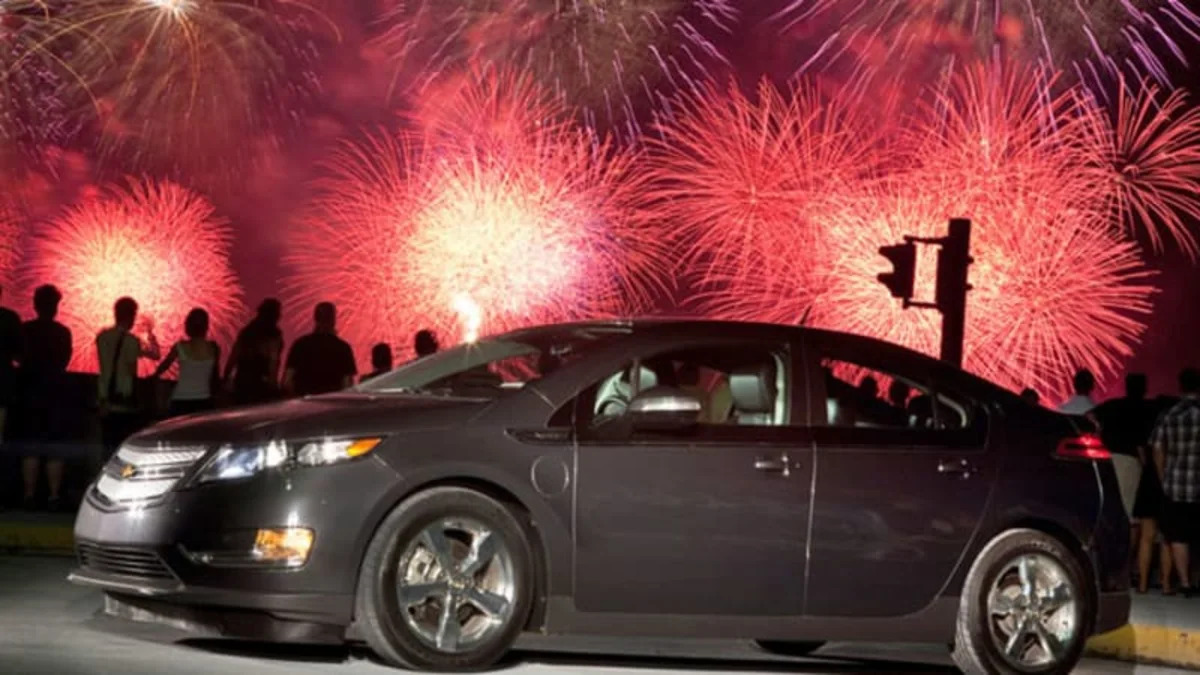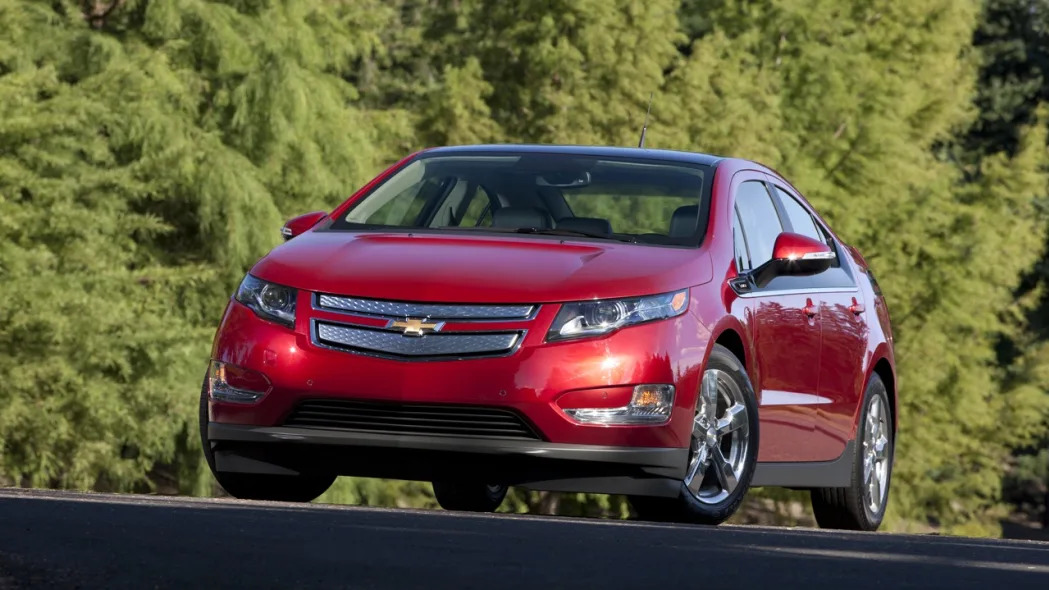Chevrolet Volt – Click above for high-res image gallery
General Motors' recently hired vice-president for sales and marketing Joel Ewanick took the stage at the Plug-In 2010 conference in San Jose, CA today and finally revealed that the 2011 Chevrolet Volt will have a base price of $41,000 (including a $720 destination charge) before federal and state tax incentives. While GM hasn't gone as aggressive as most people had hoped on the sticker price, the real deal appears to be the $350 per month for 36 months lease. That matches the monthly payment that Nissan is charging for the Leaf EV.
The effective purchase price of the Volt will be cut to $33,500 with a $7,500 federal tax credit (hence the asterisk in the title), but buyers will have to finance the $41,000 and get the credit back on their next tax return. Lease customers will have the credit factored in to their payment. The Volt lease requires a $2,500 down payment (vs $2,000 for the Leaf), but GM is including a clause in the lease contract that allows leasers to buy the car at the end of their term so that the automaker don't have another standoff with customers like it did with the all-electric EV1. Follow the jump to learn more about the Volt's price and how the order process will go, but first take our informal poll below.
The base sticker price gets customers a very well equipped car that includes standard navigation with a seven-inch screen, an eight-year/100,000 mile battery warranty, Bluetooth connectivity, Bose audio system and five years of OnStar service included. The OnStar service, which includes turn-by-turn directions and mobile applications, normally costs $300 per year. The only available options for the Volt are heated leather seats, chrome wheels, three premium paint colors and rear park assist.
We asked GM spokesman Randy Fox about the high-level of standard equipment. When the automaker's two-mode hybrid SUVs were launched, they were only available in a highly contented form like this, which led to very high sticker prices and subsequently low sales. According to Fox, these early build combinations of the Volt are being kept simple and the expectation is that there will be sufficient demand to absorb them. Within a year or two as production ramps up, GM will begin offering the Volt with less content and a lower price point. Apparently this is the cost of being an early adopter.
Within a year or two, GM will begin offering the Volt with less content and a lower price point.
Based on the lease price, GM is clearly confident that the Volt will be successful and retain a high residual value at the end of the three-year lease term. The Volt goes on sale in December of this year in seven U.S. markets, and GM expects it to be available nationally within 12-18 months. Despite the price point, enough initial demand is expected that at least some dealers will be tempted to charge an extra markup. Although the automaker has no real power to stop dealers from charging whatever they think the market will bear, Ewanick acknowledged that dealers will be discouraged from doing that.
Ewanick also outlined the ordering process for the Volt. Initially 600 Chevrolet dealers in the launch markets will be certified to sell and service the Volt. Customers can find these dealers through the http://getmyvolt.com website. Once they find a local dealer, the process proceeds much like ordering any other car with customers paying a deposit and filing order forms. Once the car has been ordered, Volt customer service advisers will contact the customer and take them through a survey to determine if they are eligible for one of the free Department of Energy-funded home charging units from Coulomb Technologies or Ecotality.
If they don't live in one of the eligible areas, they will be referred to another charger supplier that GM will be working with. Because the Volt's 16 kilowatt-hour battery pack can be charged in just 8-10 hours from a 110 volt outlet, customers don't actually have to get a 220-volt charger for the Volt, potentially saving them several thousand dollars compared to a battery EV like the Leaf. GM will be naming its preferred charger supplier and a price closer to the car's on-sale date.
Customers will also be able to use the http://getmyvolt.com site to monitor the build of their vehicle and get more information about the car even after delivery.
So, the big question remains:



Sign in to post
Please sign in to leave a comment.
Continue